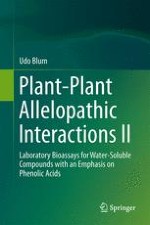2014 | OriginalPaper | Buchkapitel
7. Laboratory Model Systems and Field Systems: Some Final Thoughts
verfasst von : Udo Blum
Erschienen in: Plant-Plant Allelopathic Interactions II
Aktivieren Sie unsere intelligente Suche, um passende Fachinhalte oder Patente zu finden.
Wählen Sie Textabschnitte aus um mit Künstlicher Intelligenz passenden Patente zu finden. powered by
Markieren Sie Textabschnitte, um KI-gestützt weitere passende Inhalte zu finden. powered by
